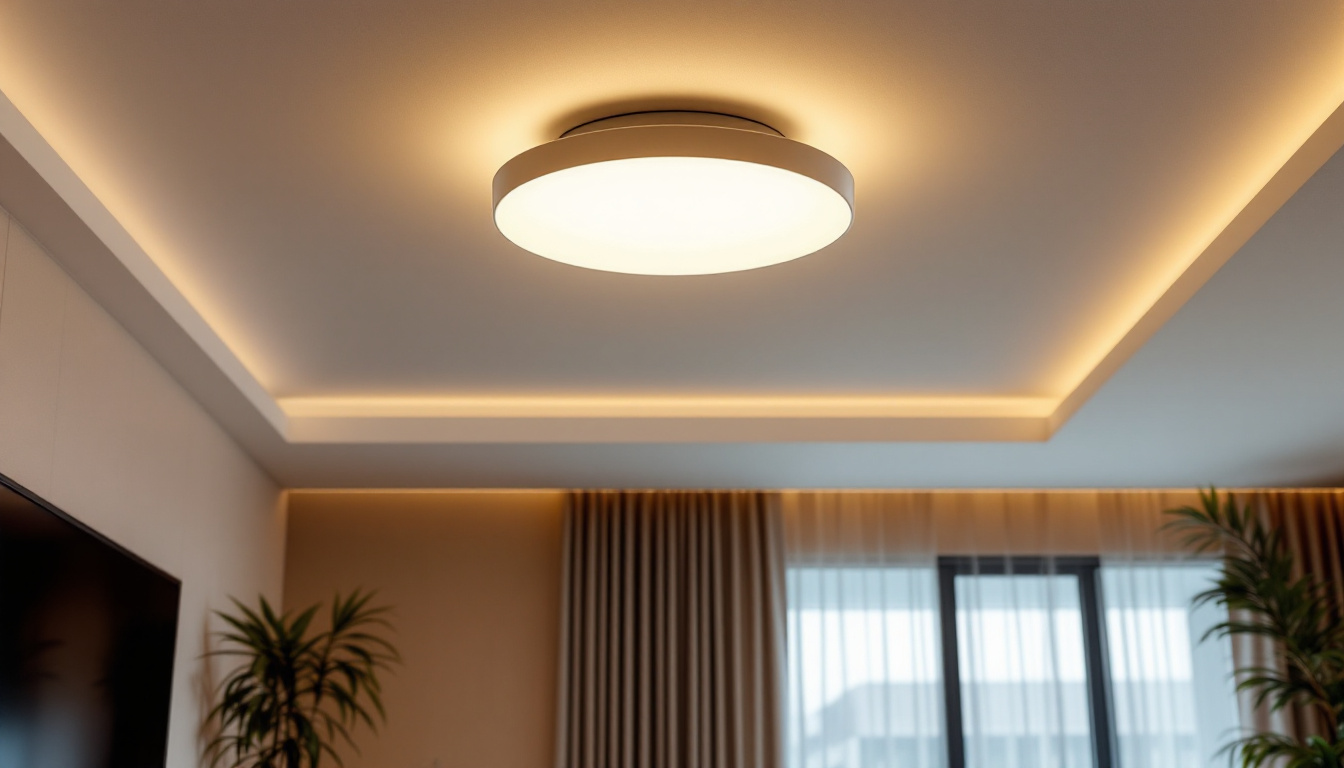
In the ever-evolving world of lighting, LED tube bulbs have emerged as a popular choice for both residential and commercial applications. For lighting contractors, understanding the cost-saving strategies associated with these energy-efficient solutions is crucial. This article delves into various methods and practices that can help contractors maximize their profitability while delivering high-quality lighting solutions to their clients.
LED tube bulbs are designed to replace traditional fluorescent tubes, offering numerous advantages such as energy efficiency, longer lifespan, and reduced maintenance costs. They come in various sizes and color temperatures, making them versatile for different lighting needs. The ability to choose from a range of color temperatures—from warm white to cool daylight—allows users to create the perfect ambiance for any space, whether it be a cozy living room or a bright, productive office environment.
One of the most significant benefits of LED technology is its energy efficiency. LED tube bulbs consume significantly less power than their fluorescent counterparts, leading to lower electricity bills for clients. This not only enhances customer satisfaction but also positions contractors as providers of sustainable solutions. Moreover, the lower energy consumption of LED tubes contributes to a reduced carbon footprint, making them an environmentally friendly choice that aligns with the growing trend towards sustainability in both residential and commercial sectors.
There are primarily two types of LED tube bulbs: direct replacement and retrofit. Direct replacement tubes are designed to fit into existing fixtures without any modifications, making them an easy upgrade for clients. Retrofit tubes, on the other hand, may require some adjustments to the fixture but can offer even greater energy savings. Contractors should also be aware of the different configurations available, such as single-ended and double-ended power options, which can influence installation methods and compatibility with existing electrical setups.
Understanding the differences between these types is essential for contractors. By recommending the appropriate type based on the client’s needs and existing infrastructure, contractors can ensure a smoother installation process and greater customer satisfaction. Additionally, educating clients about the benefits of each type can empower them to make informed decisions that best suit their lighting requirements and budget constraints.
The transition to LED technology offers numerous benefits beyond just energy savings. LED tube bulbs have a longer lifespan, often lasting up to 50,000 hours compared to the 7,000-15,000 hours typical of fluorescent tubes. This longevity means fewer replacements, which translates to lower maintenance costs for clients. Furthermore, the durability of LED tubes makes them less prone to breakage, which is particularly advantageous in high-traffic areas or industrial settings where lighting fixtures may be subject to wear and tear.
Additionally, LED bulbs emit less heat, reducing the load on cooling systems in commercial spaces. This can lead to further energy savings and a more comfortable environment for occupants. The reduced heat output also minimizes the risk of overheating, which can prolong the life of other electrical components in the fixture. As a result, businesses can enjoy not only lower energy costs but also enhanced operational efficiency, making the switch to LED a smart investment for any organization looking to optimize their energy usage and improve their overall lighting quality.
For lighting contractors, implementing cost-saving strategies when working with LED tube bulbs can significantly enhance profitability. Here are several effective approaches to consider:
One of the most straightforward ways to reduce costs is through bulk purchasing. Many suppliers offer discounts for contractors who buy in larger quantities. By purchasing LED tube bulbs in bulk, contractors can lower their per-unit costs, allowing for more competitive pricing when bidding on projects.
Additionally, maintaining a well-stocked inventory can help contractors avoid last-minute purchases at higher prices. This approach not only saves money but also ensures that projects can proceed without delays due to material shortages. Furthermore, establishing strong relationships with suppliers can lead to better deals and exclusive offers, creating a win-win situation for both parties. Regularly reviewing inventory levels and forecasting demand can also help contractors make informed purchasing decisions, ensuring they take full advantage of bulk purchasing opportunities.
Many regions offer energy efficiency incentives or rebates for businesses that upgrade to LED lighting. Contractors should be aware of these programs and inform their clients about potential savings. By assisting clients in navigating these incentives, contractors can enhance their value proposition and help clients save money in the long run.
Moreover, promoting the long-term cost savings associated with LED lighting can help justify the initial investment, making it easier for clients to make the switch. This collaborative approach can strengthen relationships and lead to repeat business. Additionally, contractors can leverage case studies and testimonials from previous clients who have benefited from these incentives, showcasing real-world examples of savings and efficiency improvements. By positioning themselves as knowledgeable advocates for energy efficiency, contractors can build trust and credibility in the eyes of potential clients.
Investing in training and education for staff can yield significant returns. By ensuring that team members are knowledgeable about the latest LED technologies and installation techniques, contractors can improve efficiency and reduce labor costs. Skilled workers can complete installations more quickly and accurately, minimizing the risk of costly mistakes.
Furthermore, educating clients about the benefits of LED technology can lead to more informed purchasing decisions. When clients understand the advantages, they are more likely to choose LED solutions, ultimately benefiting both the contractor and the customer. Regular workshops and training sessions can also keep staff updated on industry trends and innovations, ensuring that the contractor remains competitive in a rapidly evolving market. Additionally, providing resources such as informational brochures or online content can empower clients with knowledge, making them more likely to engage in discussions about their lighting needs and preferences.
Efficiency is key to maximizing profitability in any business, and lighting contractors are no exception. Here are some practices that can help streamline operations and reduce costs:
Developing a standardized installation process can save time and reduce labor costs. By creating a checklist or a step-by-step guide for installations, contractors can ensure that all team members follow the same procedures, leading to consistent results and fewer errors.
Additionally, investing in the right tools and equipment can further enhance efficiency. For example, using specialized tools for LED installations can speed up the process and improve the quality of work.
Offering regular maintenance services can create a steady stream of income for contractors. By providing clients with the option to schedule routine inspections and maintenance for their LED lighting systems, contractors can ensure that the systems operate efficiently and last longer.
Regular maintenance can also help identify potential issues before they become significant problems, saving clients money in the long run. This proactive approach can enhance customer satisfaction and loyalty, leading to repeat business and referrals.
Utilizing technology can significantly enhance operational efficiency. Project management software can help contractors keep track of timelines, budgets, and resources, ensuring that projects stay on schedule and within budget.
Moreover, using customer relationship management (CRM) tools can improve communication with clients, helping contractors manage leads and follow up on potential projects more effectively. By leveraging technology, contractors can streamline their operations and focus on delivering high-quality services.
To capitalize on the growing demand for LED lighting solutions, effective marketing strategies are essential. Here are several approaches contractors can use to promote their LED offerings:
When marketing LED tube bulbs, emphasizing the energy savings can be a powerful selling point. Providing potential clients with clear comparisons between traditional lighting and LED solutions can help them understand the long-term financial benefits.
Case studies showcasing successful LED installations can also be effective. Sharing real-world examples of energy savings and improved lighting quality can build trust and credibility with prospective clients.
Social media platforms offer an excellent opportunity for contractors to showcase their work and engage with potential clients. By sharing images of completed projects, testimonials from satisfied customers, and informative content about the benefits of LED lighting, contractors can build a strong online presence.
Additionally, targeted advertising on social media can help reach specific audiences, making it easier to connect with businesses and homeowners interested in upgrading their lighting systems.
Building relationships with other professionals in the industry can lead to valuable partnerships. Collaborating with architects, interior designers, and electrical engineers can create opportunities for contractors to showcase their LED solutions in various projects.
Attending industry events and trade shows can also provide networking opportunities. By connecting with other professionals, contractors can stay informed about the latest trends and technologies, positioning themselves as knowledgeable leaders in the lighting industry.
In a competitive market, lighting contractors must adopt cost-saving strategies to thrive while providing clients with high-quality LED tube bulb solutions. By understanding the benefits of LED technology, implementing efficient practices, and effectively marketing their services, contractors can enhance their profitability and build lasting relationships with clients.
Ultimately, the shift towards LED lighting is not just a trend; it is a sustainable choice that benefits both contractors and their clients. By embracing these strategies, lighting contractors can position themselves for success in the evolving landscape of the lighting industry.
Ready to elevate your lighting game and pass on the savings to your clients? Look no further than LumenWholesale for all your LED tube bulb needs. Our commitment to quality and affordability ensures that you get the most out of your investment. Say goodbye to local distributor markups and hello to spec-grade lighting products that meet the highest industry standards. With free shipping on bulk orders, LumenWholesale is your go-to source for premium lighting without the premium price tag. Don’t compromise on quality or cost—Wholesale Lighting at the Best Value is just a click away. Make the smart choice for your business and your clients with LumenWholesale.

Discover the essential guide to outdoor wall lights for houses, tailored for lighting contractors.

Discover the top challenges lighting contractors face when installing back-to-back electrical boxes for switches and receptacles.

Discover how long light bulbs can revolutionize your lighting projects and elevate your contracting business.

Discover how ceiling light fixture recessed designs are revolutionizing the lighting industry with their sleek aesthetics, energy efficiency, and versatile functionality.